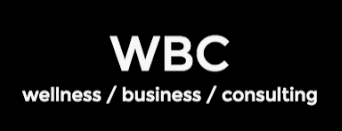Any business leader knows that if someone isn’t buying what you’re selling — figuratively or in the most literal sense — your business isn’t going to last long. But how do you get customers and consumers to have as much trust and confidence in your brand and your company’s capabilities as you do? Here’s how the experts weighed in.
A. Be Attentive and Personalize Customer Support
Customer service goes a long way toward developing trust. If customers have questions or problems, they want to feel they can reach out and get an answer promptly from someone who knows what’s going on and can really help them. If your customer support is outstanding, people will be much more inclined to trust you and rate your business highly, even if you’re not always perfect. - Kalin Kassabov, ProTexting
A. Connect and Communicate
Communication is key to retaining trust. Implement procedures to immediately connect with your client to find out what exactly went wrong. Genuinely thank them for bringing it to your attention. Then actually reconnect when the issue has been fixed. Encourage your entire team to thrive from your customers’ positive and negative feedback and you’ll have an army of loyal and supportive customers. - Meghan Larson, Adistry
A. Have a Consistent Marketing Strategy
Be consistent in your content marketing strategy. Post daily on Facebook, Twitter and Instagram. Be consistent with your email marketing newsletter. All these efforts establish confidence that you’ll always be around and won’t just disappear on them one day. - Jared Atchison, WPForms
A. Establish an SEO Presence
People generally trust organic Google search results. If a brand wants to create trust with consumers, getting into those top three Google search results for your target keywords immediately establishes trust. Create blog posts with customer FAQs, execute backlink building campaigns and implement an SEO strategy to begin the journey of getting your company to rank well on Google. - Brett Farmiloe, Markitors - Digital Marketing Company
A. Show Off Your Expertise
If you want to win your consumers’ trust, you need to prove your value. Put out content that illustrates why your service or product is the best available option out there. A great way to do this is to get published on platforms your consumers already trust. Writing a piece for the industry’s leading publication will beat out a hundred half-hearted blog and social media posts every time. - Ryan Wilson, FiveFifty
A. Put Customers’ Interests First
People trust brands that appear to put their interests first. They don’t like brands that mislead, overpromise or are obviously manipulative. If you want to build trust, focus on building genuinely useful products and cultivating meaningful relationships with customers, not on wringing every last cent you can from them. - Vik Patel, Future Hosting
A. Encourage Feedback
We encourage our users to send us feedback about any issues they’re having or questions about their most recent purchase, our app or our website. We then try to get back to them as soon as possible. Providing consumers with the means of easily getting in touch and being able to quickly respond back to them is essential to building trust. - Brian David Crane, Caller Smart Inc.
A. Connect Personally
Focus on building a relationship, getting to know your customers and sharing more about you as a company and team. Share and communicate, listen and help, and deliver on what you say. Consider it a two-way street and be open to feedback. - Cynthia Johnson, Ipseity Media
A. Be Responsive
A brand is a living story. You can’t just declare what it means and expect it to stick. You have to respond to attempts by the market to assign new parts to your brand identity. One of the worst ways your brand image can change is through bad experiences with your products. For example, a lot of airlines have recently had their brand defined by notable bad experiences. You have to be ready to respond. - Adam Steele, The Magistrate
A. Listen and React
Your customers are what keeps you in the game. Listening to them and responding will show them that they matter and also that they are heard. This line of communication is a direct builder of trust. - Colbey Pfund, LFNT Distribution
A. Deliver on Your Promises
The top way to create trust between your brand and consumers is to deliver what you promised and hold up your end of the bargain. Create a service or product that you can stand by with pride and integrity. If something goes wrong, handle it quickly and effectively to maintain trust. - Rachel Beider, Massage Greenpoint, Massage Williamsburg
A. Create a Manifesto and Origin Story
People connect with other people. Spend time writing your manifesto. Talk about the values, the team and the current state of the company, including the warts. Get specific. Also, talk about why the company exists and how things came together. By pulling back the curtains, you give people the opportunity to resonate with you because they understand the “why.” - Ajay Paghdal, OutreachMama
A. Be Authentic
The key to creating trust between your brand and your consumers is consistent authenticity. The more genuinely your products and your process reflect your core values, the more naturally all stakeholders — including your customers — will cherish your offerings. - Adam Mendler, Custom Tobacco
A. Be Transparent and Consistent
People are looking for someone they can rely on and trust. No matter what you’re selling, your customers want to know that they can count on you and that you’ll be there for them in their time of need. They want to know that there are real people behind your brand who have the same values, goals and priorities as they do, so stand up for what you believe in and let them know about it. - David Tomas, Cyberclick
A. Enable a Steady Stream of Relevant Reviews
People read and rely on online reviews more and more every year. Ask your customers to leave reviews, good or bad, and keep a close eye on them. We’ve had great success attracting new customers by climbing the rankings through Yelp, local Google targeting, industry reviews, etc. We can tell clients how great we are, but until they read it from others, we have a hard time gaining their full trust. - Matt Murphy, Kids in the Game
Article from Huffington Post










